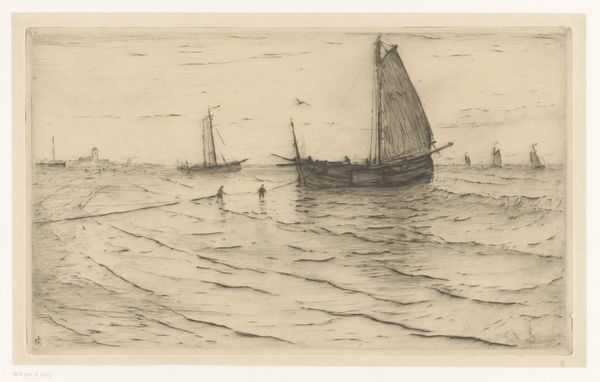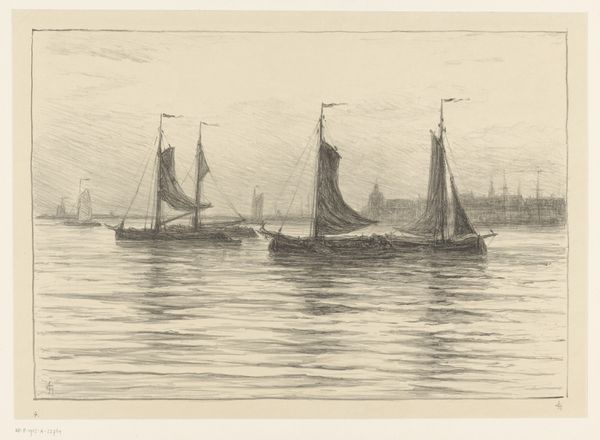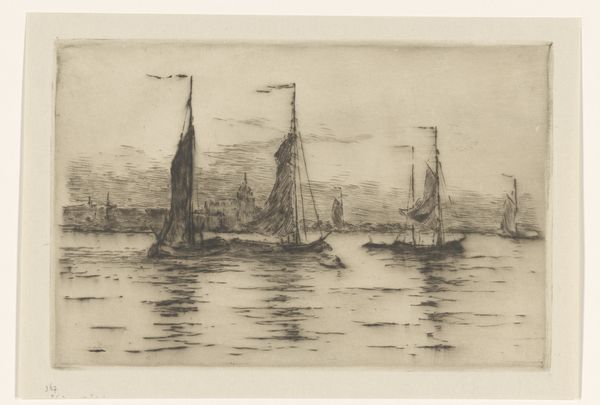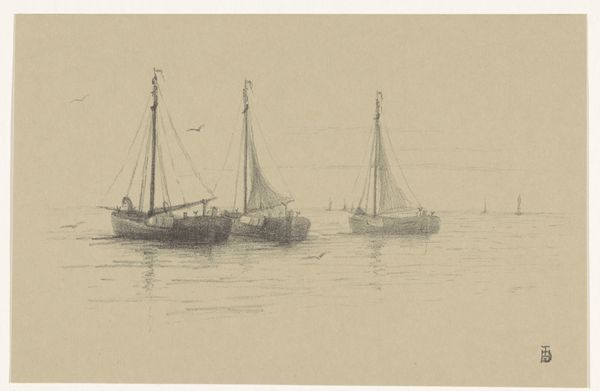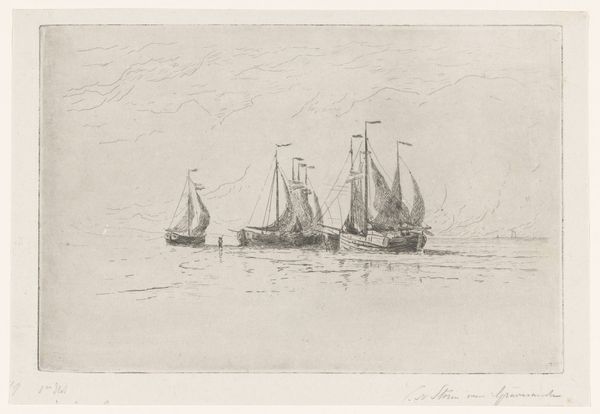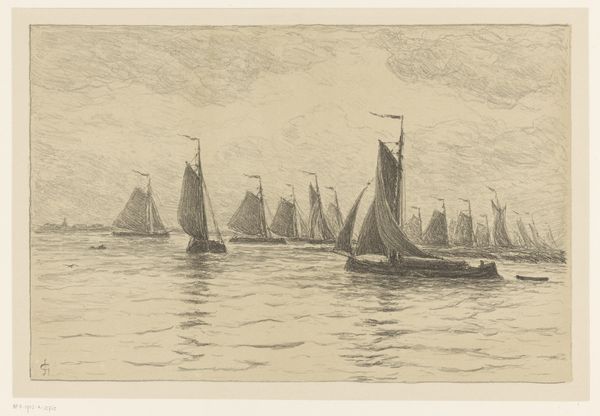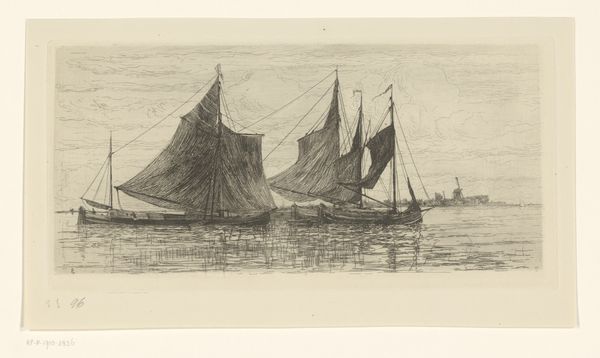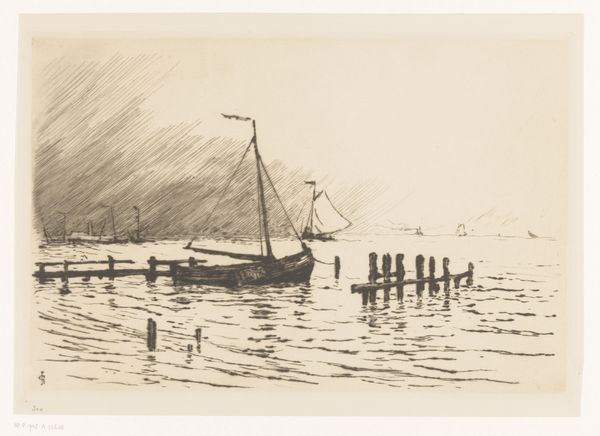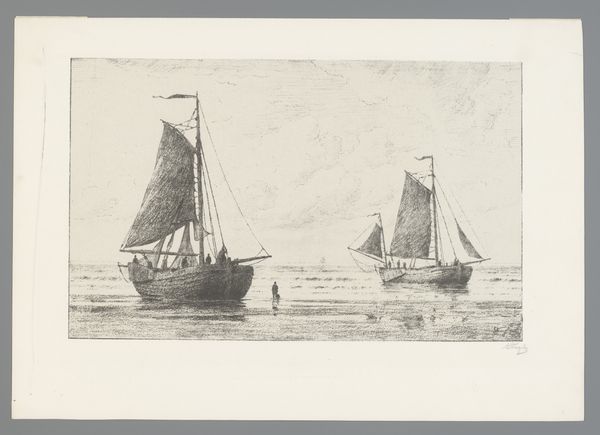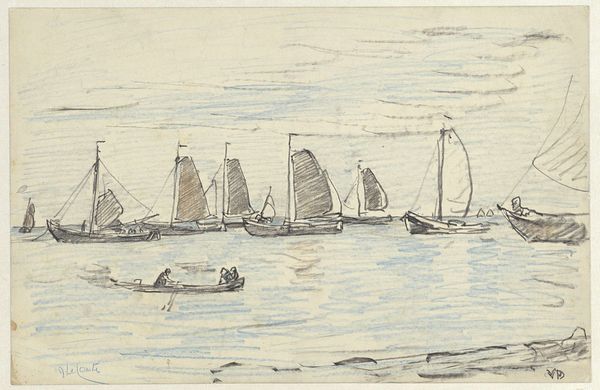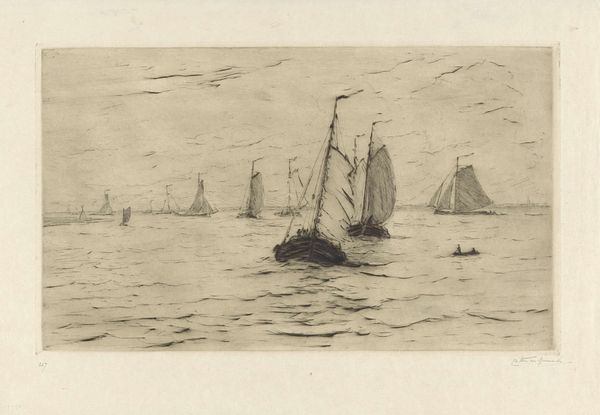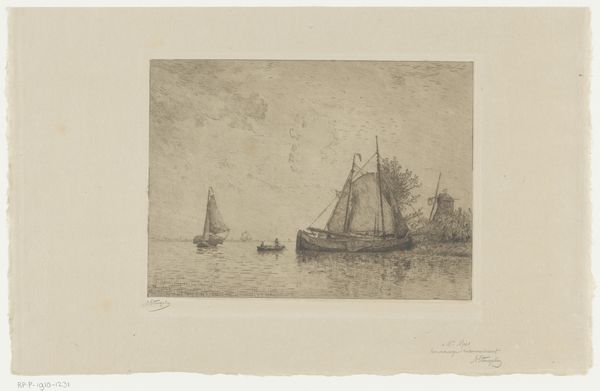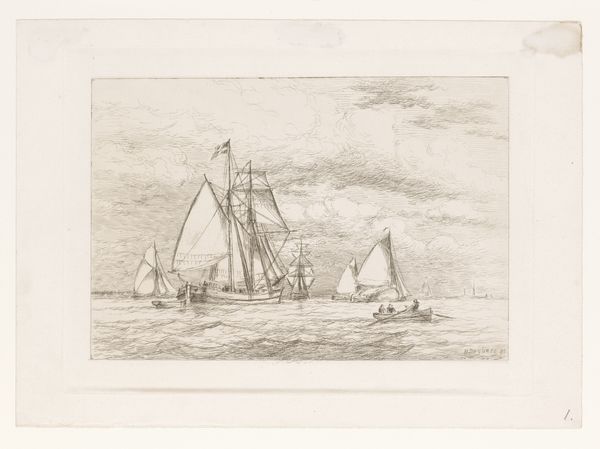
Drie zeilboten op de Maas bij Dordrecht 1889 - 1902
0:00
0:00
print, etching
#
dutch-golden-age
# print
#
etching
#
landscape
#
etching
#
realism
Dimensions: height 345 mm, width 497 mm
Copyright: Rijks Museum: Open Domain
Editor: We’re looking at "Three Sailing Boats on the Maas near Dordrecht" by Carel Nicolaas Storm van 's-Gravesande, created between 1889 and 1902. It’s an etching, currently held at the Rijksmuseum. The detail achieved with etching is impressive – it feels quite intimate. What stands out to you as a historian of art? Curator: It’s interesting to consider this work within the context of late 19th-century Dutch art and its relationship to maritime power. The image is seemingly benign—three sailboats, beautifully rendered, on the Maas river. However, seascapes have always carried significant weight, often reflecting a nation's economic and political power. Do you see any suggestion of commerce or industry? Editor: I don't see obvious signs of commercial activity; the boats seem almost leisurely, perhaps for fishing, not large-scale trade. Curator: Exactly. And this is precisely the point. Unlike the grand, heroic seascapes of the Dutch Golden Age, which often depicted bustling trade routes or naval dominance, this print offers a more subdued, perhaps even nostalgic, view of Dutch maritime life. The etching process itself allows for incredible detail, drawing the viewer into this almost private moment. Considering the rising industrialisation at the time, what do you think the artist is telling us by representing the traditional sailing boat? Editor: I hadn't considered that it could be about rising industrialisation. I now read the artwork as representing a shift from the traditional activities of Dutch life to the dawning of industrial changes. Curator: Indeed. Van 's-Gravesande perhaps aimed to evoke a sense of a world on the cusp of change. The public consumption of such imagery highlights the changing identity of the Dutch and the romanticization of traditional ways of life during modernisation. It reminds us that art is never truly divorced from the socio-political forces of its time. Editor: That’s a very insightful point. I am now considering how artistic representations like this influence public perception of societal shifts, so thank you for that.
Comments
No comments
Be the first to comment and join the conversation on the ultimate creative platform.
